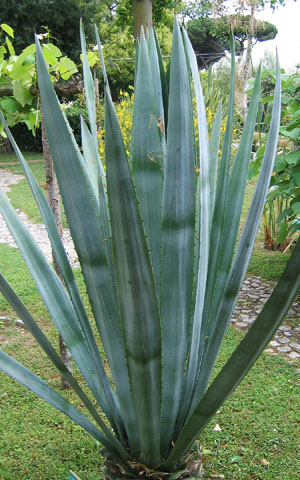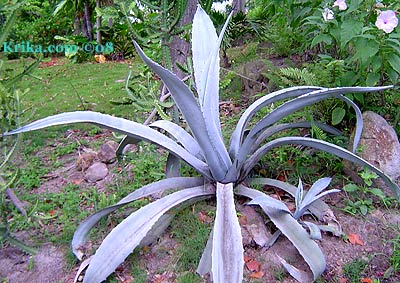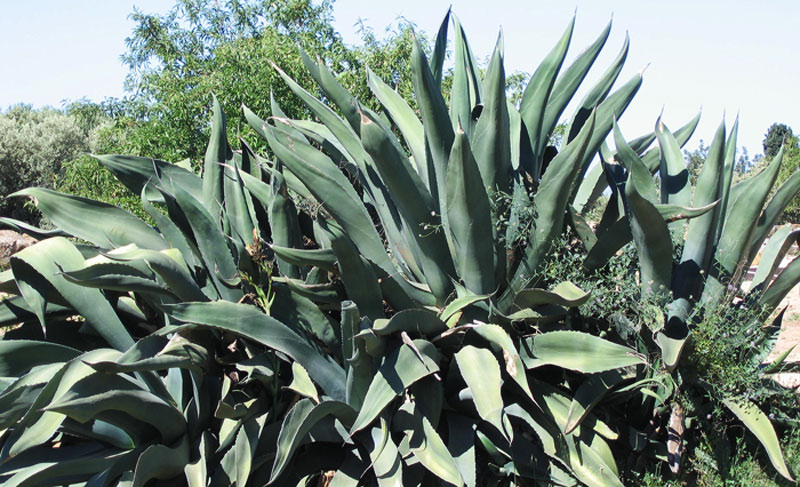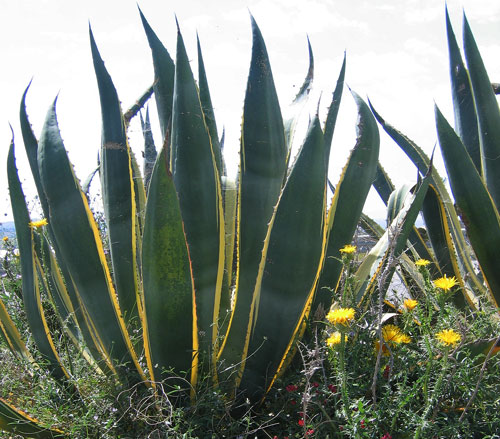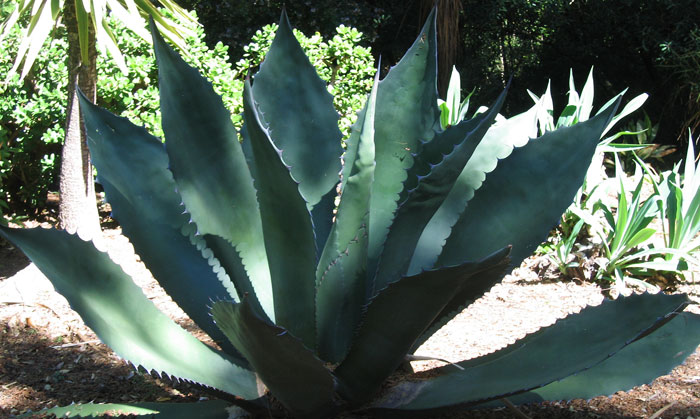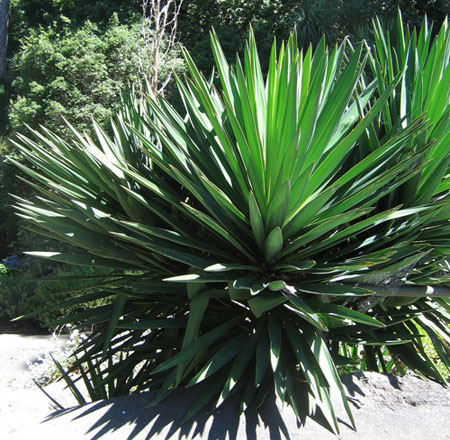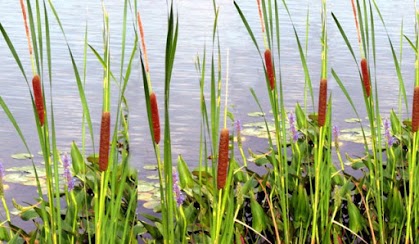| GreenGardeningCookingCuring.com | Tweet |
| Tour Our Destination Websites | Taxco-Today.com | Oaxaca-Today.com | Montserrat-Today Site |
| See our silver designs at Krika.com | Read our travel stories and other tales at Krika.com |
|
|
Maguey
and Century Plants Photographed: At the Hotel Magdalena, Tobago Plantations Estate, Lowlands, Tobago, in 2018 ©GreenGardeningCookingCuring.com 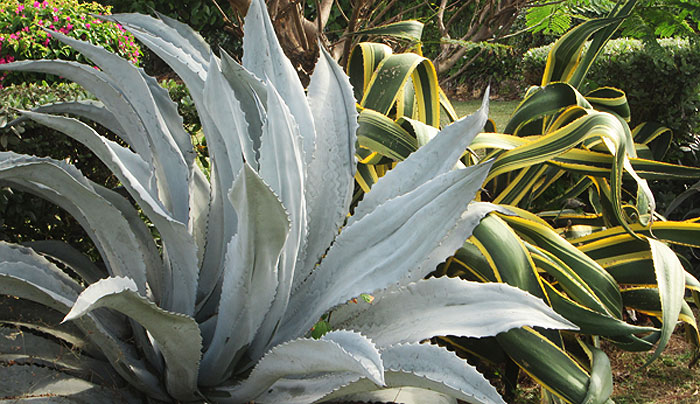 |
||
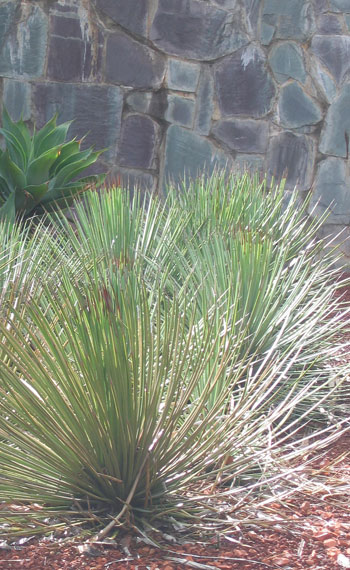 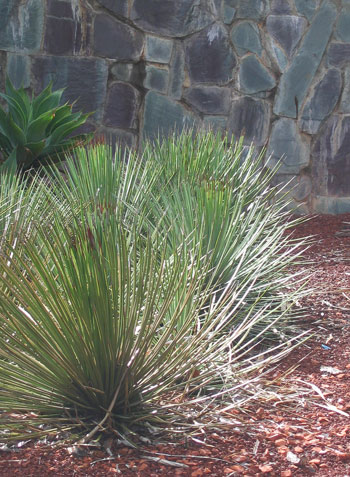 Falcate
Needle-leaf Hardy Century Plant Agave
striata ssp. falcata Falcate
Needle-leaf Hardy Century Plant Agave
striata ssp. falcataWhen mature this perennial plant will reach a height of about 20 inches. Benefits: A surrounding row of these should keep most pesky creatures out of your garden. It will, however, attract bees and hummingbirds when it is blooming. From: Mexico Photographed: In the Royal Botanical Gardens in Sydney, Australia, 2013. Planting and Care: Grown in full sun, this agave will appreciate a good well-composted soil, but water it sparingly. Text and Photograph ©GreenGardeningCookingCuring.com 2013/2019 |
||
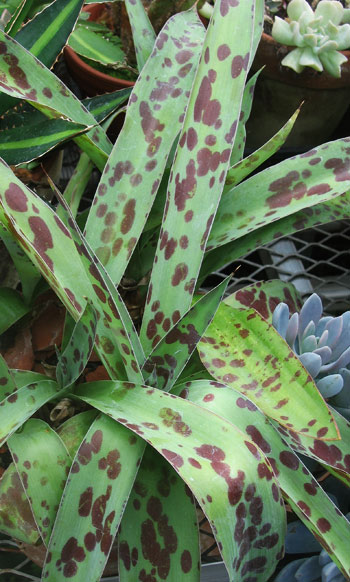 Agave
Spot, Manfreda, American Aloe, Rattlesnake Master Manfreda
virginica Agave
Spot, Manfreda, American Aloe, Rattlesnake Master Manfreda
virginica This is not one of the huge tortured leaves agaves, but one with leaves extending only about 15". Nevertheless, it is very appealing and in northern climates will make an attractive greenhouse specimen. Benefits: Agave Spot earned one of its other names, rattlesnake master, as it was used to treat bites from the poisonous snake. It is said to have other curative qualities as well. From: The United States and Mexico. Photographed: In the Blithewold Garden in Bristol, Rhode Island 2013. Planting and Care: The agave spot or Manfreda prefers full sun in cooler climates and a bit of shade during the hot mid day in warm climates. It likes well drained soil and light watering. Its advantage as an agave is that it is more cold tolerant than other members of its family. Text and Photograph ©GreenGardeningCookingCuring.com 2013/2019 |
||
|
||
In a large drink glass with lots of ice, pour in your desired amount of tequila followed by orange juice. Follow this with carefully pouring in genuine grenadine. It's delicious. |
||
Century
Plant (2), Maguey, American Aloe (no relative of aloes) Agave
americana 'Marginata' |
||
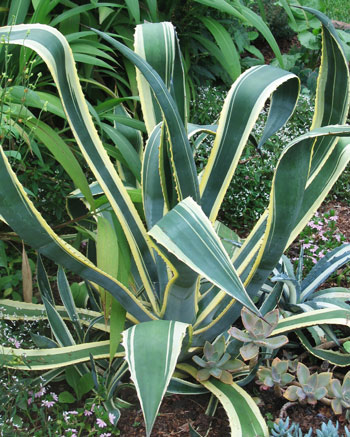 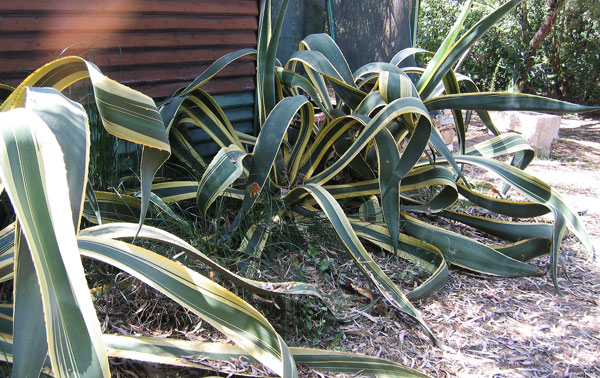 |
||
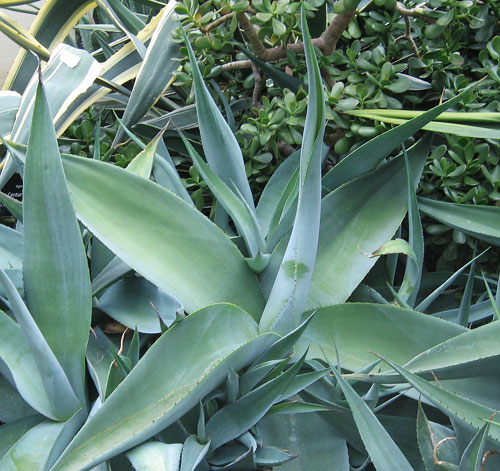 Dwarf
Century Plant, Smooth Agave, Spineless Jade Agave, Agave 'Golden
Moments' Agave
desmettiana syn. A. regeliana, A. miradorensis A. desmettiana Dwarf
Century Plant, Smooth Agave, Spineless Jade Agave, Agave 'Golden
Moments' Agave
desmettiana syn. A. regeliana, A. miradorensis A. desmettianaThis lovely agave is relatively small with 4 inch wide leaves that will reach 3 feet in length when mature. Do be advised it has very sharp spines at the end of its leaves that can be very painful to encounter. Benefits: This agave is both edible and nutritious. It also has medicinal benefits. From: Mexico Photographed: At the Roger Williams Park Botanical Center in Rhode Island in 2013. Planting and Care: The perennial dwarf century plant can handle relatively mild winters surviving temperatures at or just below freezing. We normally think of agaves as sun lovers, but this one prefers a bit of mid-day shade. The most important feature to remember with this plant is that it normally grows in very arid conditions, so watch carefully the amount of water you give it. I also read that watering should be done with warm water. Text and Photograph ©GreenGardeningCookingCuring.com 2013/2019 |
||
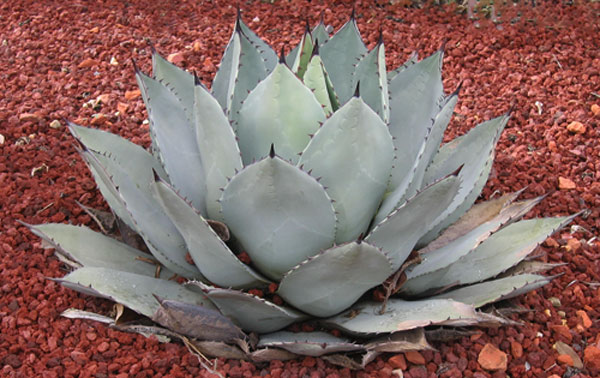 Flexible
Spined Hardy Century Plant, Century plant, American Agave, American
Century Plant, Maguey, Flowering Aloe, American Aloe, Spiked
Aloe. Agave flexispina Flexible
Spined Hardy Century Plant, Century plant, American Agave, American
Century Plant, Maguey, Flowering Aloe, American Aloe, Spiked
Aloe. Agave flexispinaThis is another very appealing agave growing low and wide becoming about a foot and a half tall and twice as wide. Do be careful of its very sharp spines. Benefits: Agave juice is loaded with vitamins and has been used externally to treat surface wounds. Internally it has been used primarily as a treatment for digestive system problems. From: High altitude Mexico Photographed: In the Royal Botanical Gardens in Sydney, Australia, 2013. Planting and Care: This is one of those wondrous plants being both drought tolerant and frost hardy. Plant it in full sun and enjoy. It usually is found growing at an altitude of just under a mile high to an additional 2000 feet. Text and Photograph ©GreenGardeningCookingCuring.com 2013/2019 |
||
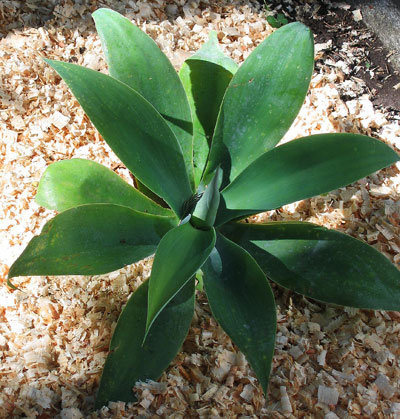 **Foxtail
Agave, Lion's Tail, Swan's Neck Agave
attenuata **Foxtail
Agave, Lion's Tail, Swan's Neck Agave
attenuataThis is a beautiful agave and should find its way into every warm climate garden. I now have one of my own and it never ceases to draw my eyes. Benefits: From: Mexico Photographed: Below in the Botanical Garden at the Hotel Atitlan on Lake Atitlan in Guatemala and on the right in my own garden at Lake Atitlan in Guatemala. Planting and care: This agave is especially desirable if you have children in the garden area as it has no sharp points or edges. It's color is lovely as well. Give it morning and late afternoon sun, a moderate amount of water and it will thrive. Surprisingly, it does well in a rich relatively moist soil free of mid-day sun. It is not cold hardy. The foxtail agave normally grows at an altitude of a mile or more. Text & Photographs ©GreenGardeningCookingCuring.com 2013/2019 No longer one of my mystery plants thanks to Peter at http:www/cactusjungle.com |
||
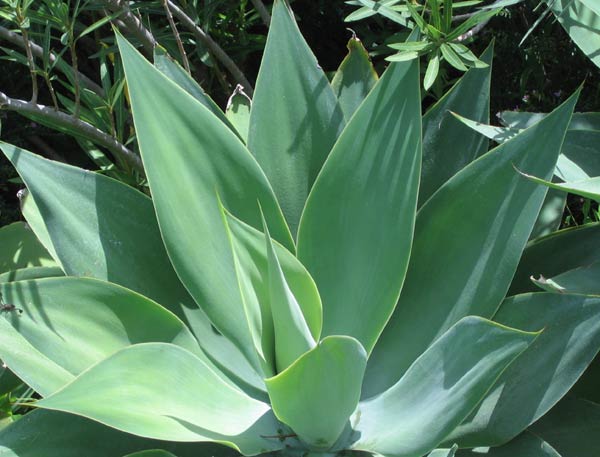 |
||
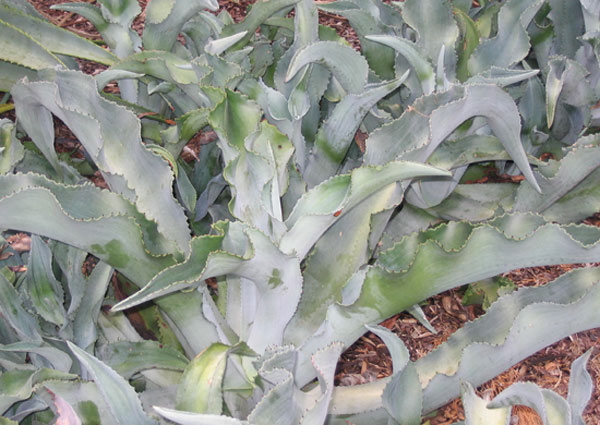 Gypsum
Century Plant, Blue Wave Agave, Gypsiferous Agave gypsophila Gypsum
Century Plant, Blue Wave Agave, Gypsiferous Agave gypsophilaThis is a very appealing agave for its unique appearance in family of rather spiky relatives. It will grow to be only two to three feet tall and wide so it is a manageable plant for most warm climate gardens. Benefits: A syrup made from the leaves of this plant can be used in place of cane sugar. From: Mexico Photographed: In the Royal Botanical Gardens in Sydney, Australia, 2013. Planting and Care: This plant will grow well in full sun, but it is amenable to a bit of shade. Plant it in well drained soil where it will be very tolerant of drought. It is not frost hardy. Text and Photograph ©GreenGardeningCookingCuring.com 2013/2019 |
||
| Maguey
Verde Grande, Century Plant (3) Agave
atrovirens As you can see on the left below, the flower stalk looks pretty much identical to an asparagus stem, one of our favorite foods. When we were exploring by car in Sicily in late spring, we delighted in pointing out these "asparagus." Benefits: When roasted, the flowering stem is edible and sap from the crushed stem bases is fermented to make the alcoholic beverage mescal. Sap from the plant itself is used to make Mexican pulque. Surprisingly, there don't appear to be any medicinal uses. From: Southern Mexico Planting and Care: This six foot wide and twelve foot tall perennial plant, the heaviest of all agaves, likes to live in full sun in a dry climate. It will grow in any type of dry soil. Text and Photographs ©GreenGardeningCookingCuring.com 2013/2019 |
||
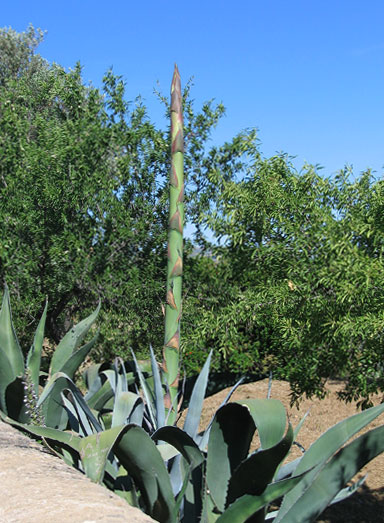 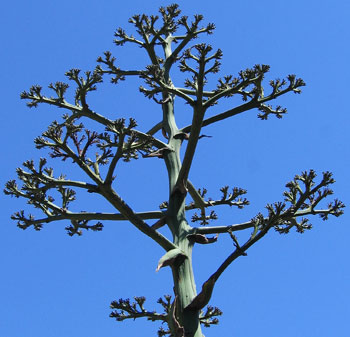 Photographed: To
the left, by the side of the road in Sicily in 2012 and
on the right in
the Palermo Botanical Garden in Sicily also in 2012. Photographed: To
the left, by the side of the road in Sicily in 2012 and
on the right in
the Palermo Botanical Garden in Sicily also in 2012. |
||
Photographed: At
the Hotel Magdalena, Tobago Plantations Estate, Lowlands, Tobago,
in 2018 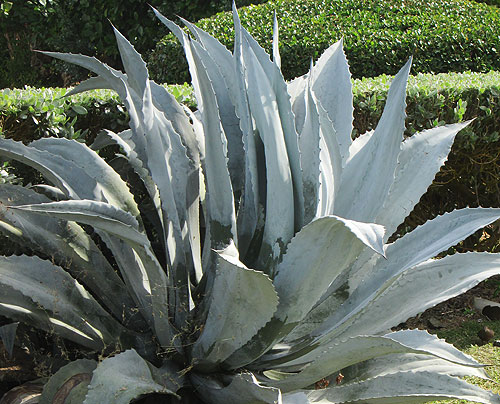 |
||
Photographed: By
the side of the road in Sicily in 2012. |
||
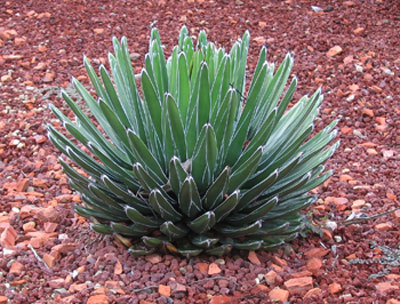 Queen
Victoria Agave Agave victoriae-reginae 'Compacta' Queen
Victoria Agave Agave victoriae-reginae 'Compacta' I was surprised to find this tiny member of what I think of as a family of relatively large plants. Benefits: Drought tolerance. From: Mexico Photographed: On the right in the Royal Botanical Garden in Sydney, Australia, in 2013. Planting and Care: From Mexico as are many of the members of the agave family, this plant is unusual for its small size, less than one foot in height. It will grow in either sun or shade and it is tolerant of cold up to 15° F and to drought conditions making it perfect for small xeriscape gardens. Text and Photograph ©GreenGardeningCookingCuring.com 2013/2019 |
||
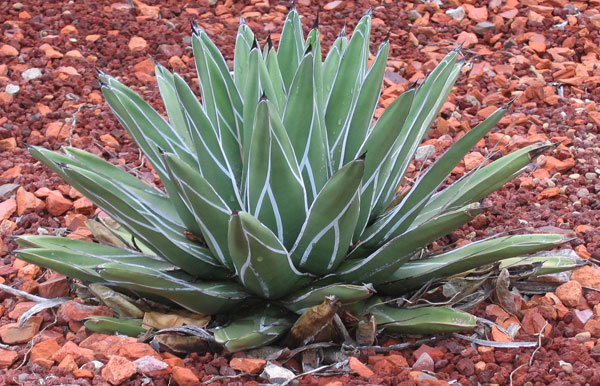 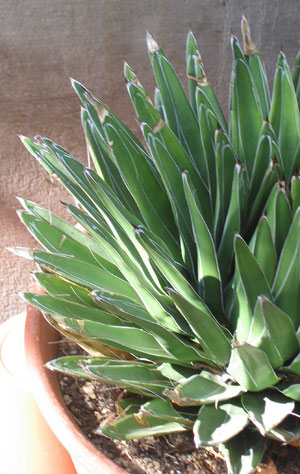 Photographed: To
the left in the Royal Botanical Garden in Sydney, Australia, in
2013 and on the right in the Carlos Thays Botanical Garden in Buenos
Aires, Argentina. Photographed: To
the left in the Royal Botanical Garden in Sydney, Australia, in
2013 and on the right in the Carlos Thays Botanical Garden in Buenos
Aires, Argentina.
|
||
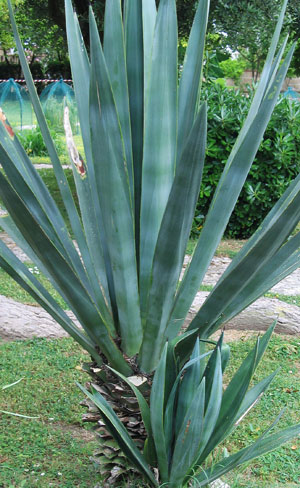 Sisal,
Sisal Hemp Agave Sisalana Sisal,
Sisal Hemp Agave SisalanaThis is the plant once grown on the infamous plantations in the Yucatan, the very hot and dry northeastern part of Mexico. Under turn of the century Mexican dictator, Diaz, thousands of Sonoran desert Indians were rounded up and transported by train across Mexico to work on sisal plantations which produced a very desirable and profitable rope. Life expectancy for the Sonorans on these plantations was fairly short, maybe a year or two. But Diaz had an endless supply of people to remove from their lands as he had many American friends like the Rockefellers who were given huge estates which had to be emptied of native peoples. Benefits: Sisal is said to have many traditional medicinal applications. From: Mexico Photographed: At the Botanical Garden in Naples, Italy, in 2012 Planting and care: To me, sisal is almost indistinguishable from the blue agave seen above. As a fast grower, it will relatively quickly achieve its mature size of being 6 feet tall and 6 feet wide. It is a tropical climate plant that will grow well in a variety of relatively poor soils in arid situations. Text & Photograph ©GreenGardeningCookingCuring.com 2012/2019 |
||
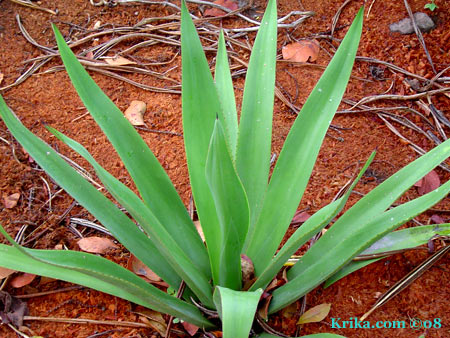 If
You Know What This Agave Is, Please Contact Me If
You Know What This Agave Is, Please Contact Me**Agave Mystery #1 This little beauty -- eventually to be huge -- had a special place in our upper garden at our former home in Montserrat. I just loved it! Benefits: From: Photographed: In our upper garden at our former home in Montserrat in the West Indies. Planting and Care: Once planted in a sunny spot in the garden with room to grow, the agaves seem grateful for almost any kindness, a little dirt, a little water, lots of sun and they don't complain. If you enhance any of those things, except the water, your plant will thrive. Text and Photograph ©Krika.com 2008/2010/2019 |
||
|
||
If
You Know What This Fern Is, Please Contact Me |
||
If
You Know What This Fern Is, Please Contact Me
|
||
Today's Plant Quiz "Curative Plants" This is one of the plants you'll find in The Lost Book of Herbal Remedies. If it looks familiar that's because it grows near and around most areas with water. I jokingly call it American Aloe, as it is used for so many home remedies. I cannot in stress more in today's times to know ways to take care of yourself naturally. I cannot imagine the fear in having to go to the hospital (where there is no way to protect yourself from breathing recirculated air. The risk of picking up something else should whenever possible be avoided. Especially in CoronaVirus times. Why not explore our green friends first to see if you can take care of the problem at home? |
||
If you like this site and would like to help us create a GreenGardeningCookingCuring.com site for Mobile users we thank you for your support. |
|
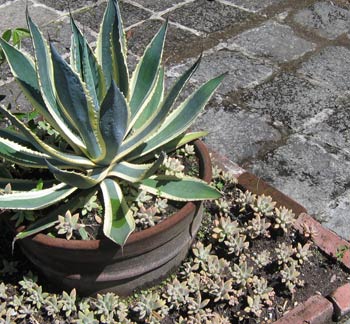
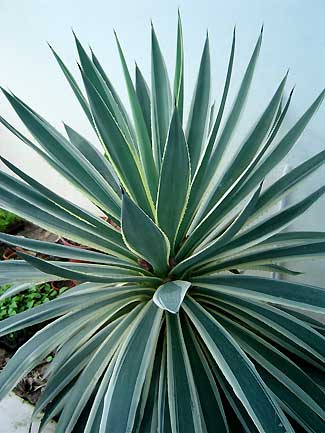 **Caribbean
Agave Agave
angustifolia variegata
**Caribbean
Agave Agave
angustifolia variegata